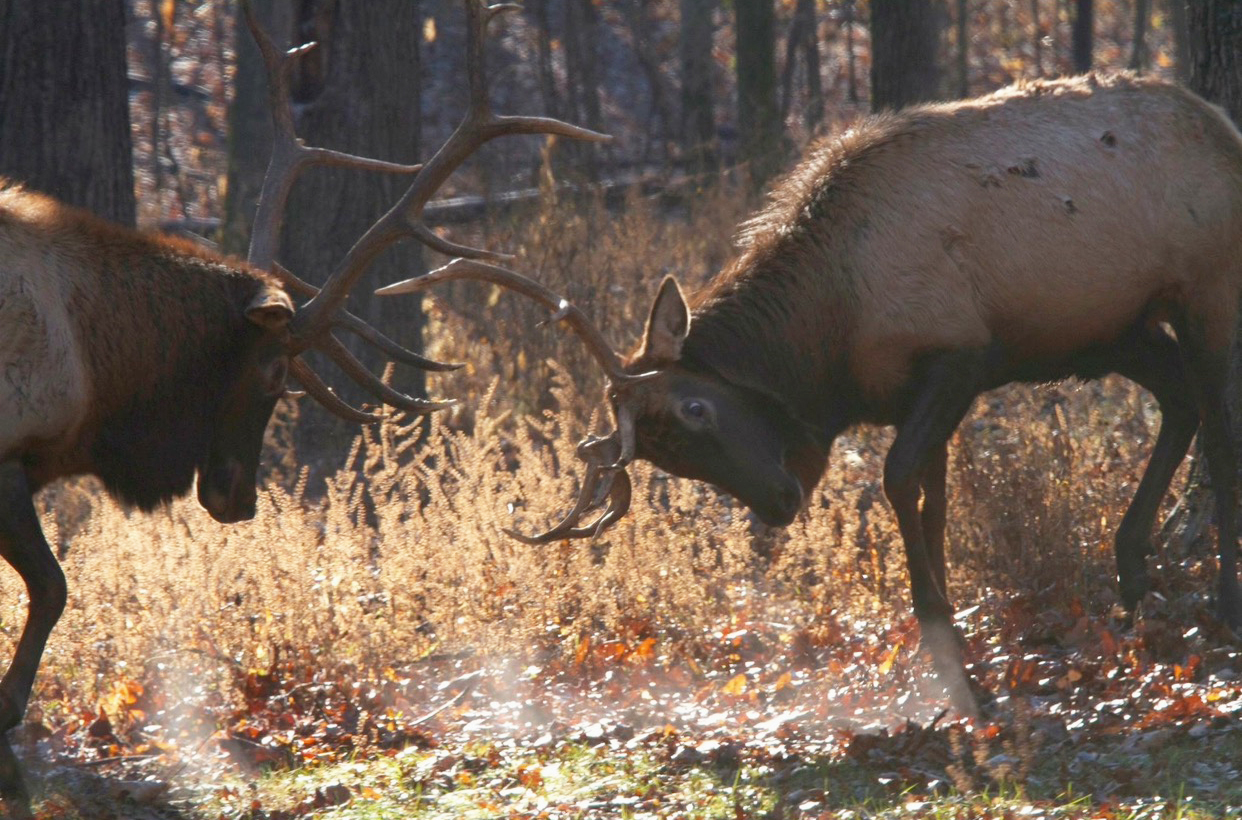Elk Viewing
Elk Herd in Arkansas.
For directions to the elk viewing area click here
For directions to Gene Rush area click here
The Buffalo National River Elk Herd: This is one of the most well-known elk herds in Arkansas and surrounding states and is in the northern part of the state, particularly around the Buffalo National River area. The herd was reintroduced to the region in the 1980s as part of an elk restoration program and has been thriving since then. You can see this heard almost all year long in the Boxely Valley.
And The Ouachita National Forest Elk Herd: This second elk herd in Arkansas is located in the Ouachita Mountains, primarily within the Ouachita National Forest. This herd was also reintroduced to the area in the 1990s as part of efforts to reestablish elk populations in the state.
The Buffalo River Elk Herd in northern Arkansas is a pretty cool thing! Back in the day, elk were almost wiped out from the Ozark and Ouachita Mountains due to overhunting and loss of their habitat. But, thanks to the efforts of the Arkansas Game and Fish Commission and some locals, they made a big comeback.
If you head to Boxley Valley during sunrise or sunset, they cross the Buffalo River, and head to the grazing area right off HWY 43/21. It’s across the street from one of my top 3 favorite hiking places, Lost Valley. It’s an amazing sight to see. These incredible elk just doing their thing – grazing in the meadows or strolling through the wild terrain. It’s pretty epic to see a bull elk showing off its massive antlers during the rutting season or watching a mama elk take care of her cute little calf.
Few items to remember:
-
- These male elk have large antlers, which they use for sparring from mid-September through mid-October or during the mating season or rut.
- Despite their large size, elk are surprisingly agile and can run at speeds of up to 40 miles per hour.
- If you notice Grinding teeth or flat ears, they are signs of aggression. See our page on the dangers of elk
- Elk have elk caves from late May into early June and that calf will stay with them till a new baby is born.
- Stay at least 75 feet from Elk and 150 feet from bear. This safe distance is required as to not affect their natural behavior and to keep you safe.
The folks in the local community and the authorities are all working together to make sure the elk are well taken care of. They’ve set up strict rules to protect both the elk and us, so it’s all about sharing this space responsibly.
Explore with
confidence
Inspiration and guidance for wherever your trail may lead.







